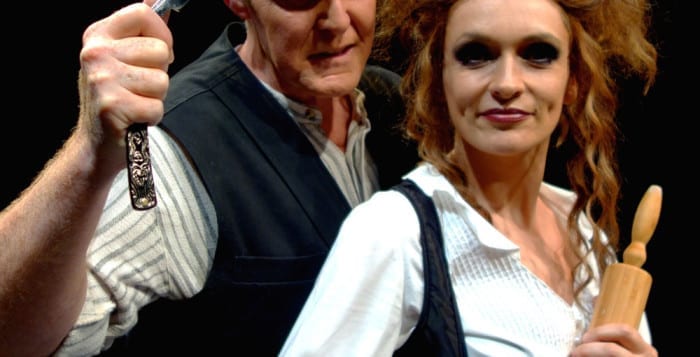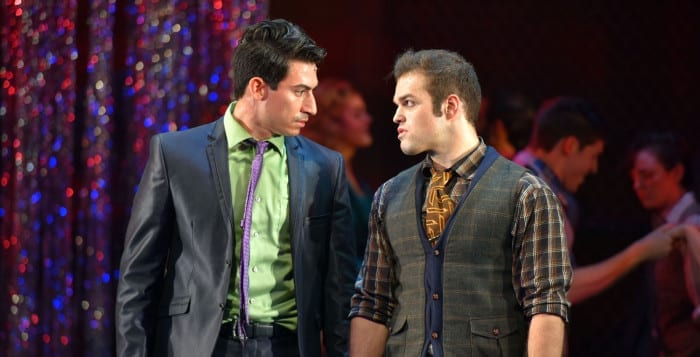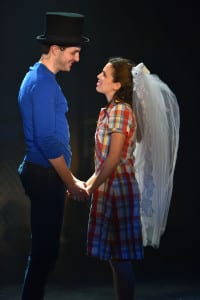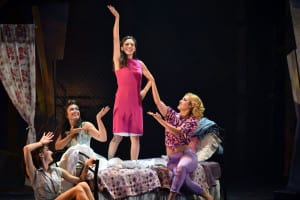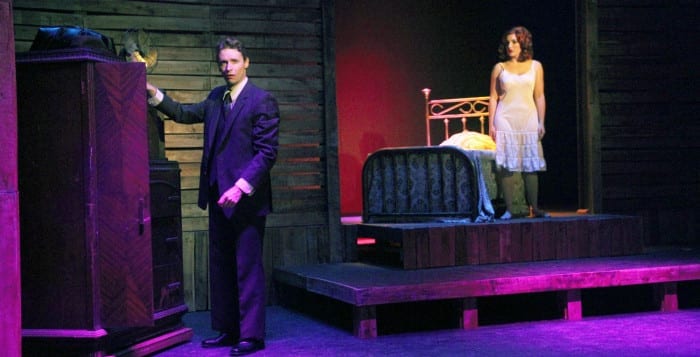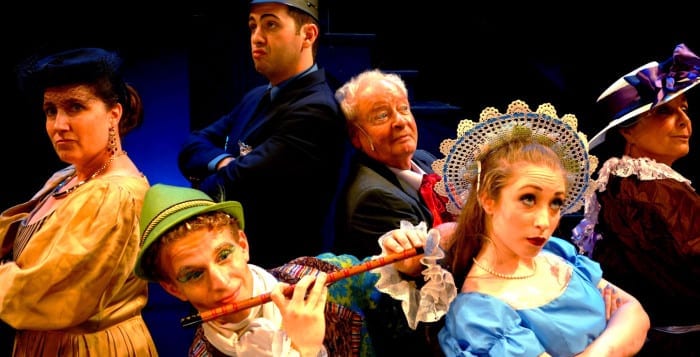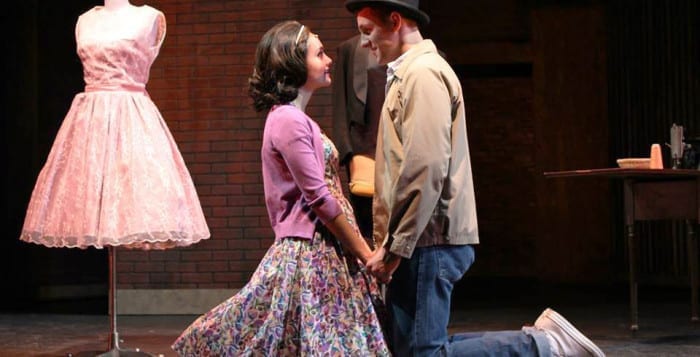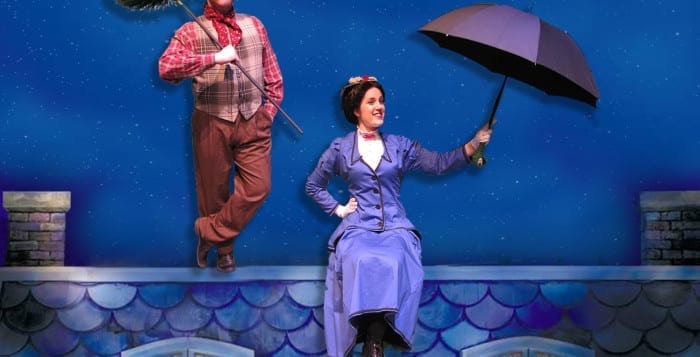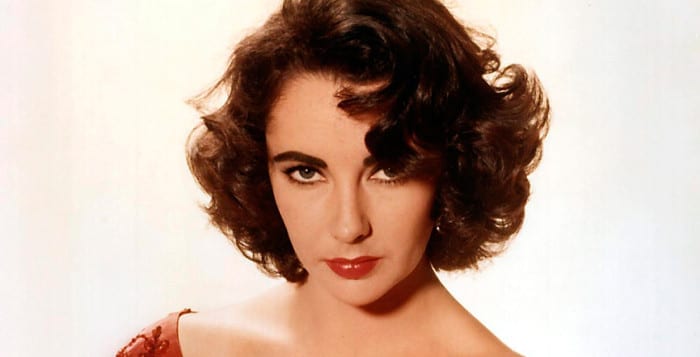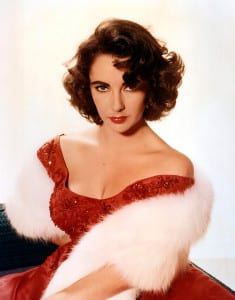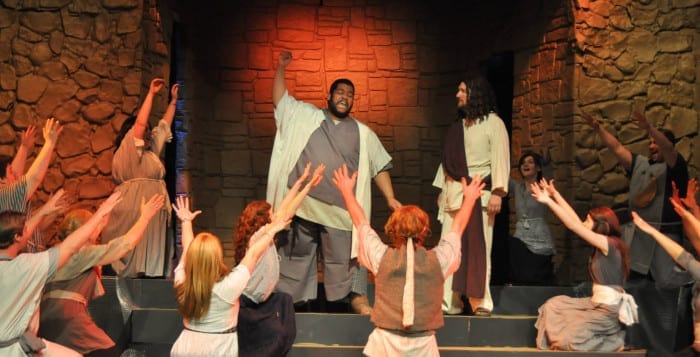Lewis Carroll’s beloved classic may be more than 150 years old, but “Alice’s Adventures in Wonderland” and “Through the Looking-Glass” still resonate with children and adults alike. Now Theatre Three’s creative geniuses Tim Peierls and Jeffrey Sanzel have written a brand new Alice-inspired children’s musical — “Alice’s Wonderland Adventures!” — that opened last Saturday. All the familiar characters are here, from the White Rabbit to the Mad Hatter, to the Queen of Hearts to the beloved Cheshire Cat. Throw in an appearance from Humpty Dumpty and Dorothy Gale, add a quick game of Wheel of Fortune for good measure, and you’ve got yourself a hit show.
Sanzel as director leads a talented group of seven adult actors, all of whom play multiple roles, through a delightful and clever production perfect for younger audiences. Seasoned actors Jenna Kavaler, Amanda Geraci, Hans Paul Hendrickson, Andrew Gasparini and Steve Uihlein are all outstanding, as are newcomers Mary Ortiz and Melanie Acampora, making their children’s theater in-house debut.
In the first act we meet Addison Carroll (Kavaler), an actress who is nervous that she will forget her lines as Alice in “Alice in Wonderland.” In a dream sequence, she finds herself transported to a magical land where the White Rabbit accidently takes her script. Addison spends the rest of the show chasing after the harried hare, trying to get it back. Along the way, accompanied by the Cheshire Cat, she has a tea party with the Mad Hatter, the March Hare and the Dormouse; plays croquet with the Queen of Hearts, who enjoys shouting, “Off with their heads!” a bit too much; and visits with Tweedledee and Tweedledum. Addison’s adventures help her gain confidence and she awakens from her nap, ready to take on the world.
Sanzel knows his target audience well. Every scene is full of song and dance, fast-paced and short. Riddles and jokes run rampant throughout the production: “Why do flowers work in the kitchen? Because you can’t make tarts without flour!”
The 12 original musical numbers by Peierls, accompanied by Steve McCoy on piano, are the heart of the show. Hendrickson is outstanding in his solos, “We’re All a Little Mad Here” and “The Tweedle’s Song,” in which he impressively performs both Tweedle roles, making his solo a duet. Geraci shines in “So Much to Do,” and the entire company’s “Wonderland Within You” is the perfect finale.
The actors utilize the set from the evening show, “Sweeney Todd,” but that’s OK because the costumes and puppets are so colorful and fun, a set is not even necessary. From the caterpillar with his six arms to the long red robe of the Queen of Hearts, costume designer Teresa Matteson has done an excellent job. It is the 13 puppets, however, designed and constructed by the brilliant Tazukie Fearon, that steal the spotlight. From the moment they make an appearance, the children are mesmerized. This is live theater at its best. Meet the cast in the lobby after the show.
Five-year-old Josephine Cunniffe, of Stony Brook, who said she loved the show, enjoyed the performance with her grandparents. Her favorite character was the White Rabbit.
Ashley Kenter, who’s been coming to Theatre Three since she was a little girl, said her favorite characters were “Alice … and the bunny” and her favorite scenes were when the Cheshire Cat told knock-knock jokes. The 10-year-old, who was having her birthday party at the theater, said she decided to celebrate the milestone at Theatre Three “because there is a lot of room here and they have a lot of good shows.” Her favorite show of all time is “Barnaby Saves Christmas,” which by coincidence is the theater’s next children’s show, from Nov. 27 to Dec. 26.
Theatre Three, 412 Main St., Port Jefferson, will present “Alice’s Wonderland Adventures!” through Oct. 24. Tickets are $10. For more information, call the box office at 631-928-9100 or visit www.theatrethree.com.


